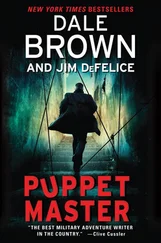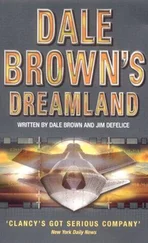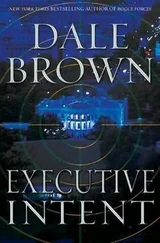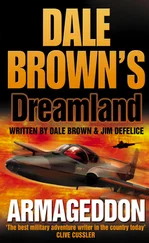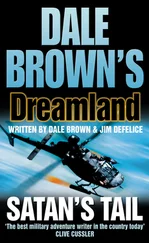Dale Brown - Sky Masters
Здесь есть возможность читать онлайн «Dale Brown - Sky Masters» весь текст электронной книги совершенно бесплатно (целиком полную версию без сокращений). В некоторых случаях можно слушать аудио, скачать через торрент в формате fb2 и присутствует краткое содержание. Жанр: Старинная литература, на английском языке. Описание произведения, (предисловие) а так же отзывы посетителей доступны на портале библиотеки ЛибКат.
- Название:Sky Masters
- Автор:
- Жанр:
- Год:неизвестен
- ISBN:нет данных
- Рейтинг книги:4 / 5. Голосов: 1
-
Избранное:Добавить в избранное
- Отзывы:
-
Ваша оценка:
- 80
- 1
- 2
- 3
- 4
- 5
Sky Masters: краткое содержание, описание и аннотация
Предлагаем к чтению аннотацию, описание, краткое содержание или предисловие (зависит от того, что написал сам автор книги «Sky Masters»). Если вы не нашли необходимую информацию о книге — напишите в комментариях, мы постараемся отыскать её.
Sky Masters — читать онлайн бесплатно полную книгу (весь текст) целиком
Ниже представлен текст книги, разбитый по страницам. Система сохранения места последней прочитанной страницы, позволяет с удобством читать онлайн бесплатно книгу «Sky Masters», без необходимости каждый раз заново искать на чём Вы остановились. Поставьте закладку, и сможете в любой момент перейти на страницу, на которой закончили чтение.
Интервал:
Закладка:
“Negros Oriental class, ” the officer of the deck announced. “Latest intelligence reports had the Nueoa Viscaya putting out to sea. It may have arrived here in the Spratlys.” Chow nodded his agreement. The Nueoa Viscaya was one of two active ex-U.S. anti-submarine-warfare vessels operated by the Philippine Navy as coastal patrol boats, another fifty-year-old rust bucket rescued from the scrap heaps. It was small, slow, and lightly armed. They used old American C-band SPS- 10 or French Triton II surface search and acquisition radars as well as older-model ULQ-6 jammers. Fortunately, its heaviest weapon was a 76-millimeter cannon, as well as 40- and 20millimeter antiaircraft and antimissile guns that might be a danger to the Hong Lung’s helicopter as far as six kilometers away. “Relay to Hong Lung that we suspect the Philippine vessel PS80 to be in the vicinity of Phu Qui Island, ” Chow ordered. “Inform them we have detected acquisition C-band radar emissions and that-“
“Message from Baoji, sir!” the radio technician yelled. “Radar contact aircraft, bearing one-niner-zero, fifteen kilometers!”
“Air-defense alert to all vessels, ” Chow shouted. “Order five-kilometers free-fire to all vessels. Broadcast on emergency frequencies for all aircraft to stay out of visual range of Chinese warships.” He dashed over to the radar display on the center bridge pedestal. The composite radar images showed nothing but Pearson Reef and Cornwallis West Reef, two very large coral formations on the southeastern edge of the Spratly Islands-and it was then obvious what had happened. The single blast of radar energy from whatever vessels were near Phu Qui was enough to divert all attention to the northeast, while aircraft managed to sneak around behind Chow’s task force, hide in the radar clutter created by the coral reefs, and slip in close. “Radar now showing three aircraft, altitude less than ten meters, speed sixty knots, ” Combat reported. “Suspect rotarywing aircraft. Range now thirteen-point-five kilometers and closing…” The radar display suddenly showed several bright white spikes radiating out from center. The spikes seemed to spin around the scope, dim, disappear, and reappear seconds later with even greater intensity. “Jamming on all systems.”
“All ships, defensive maneuvering, ” Commander Chow ordered. “Active ECM and decoys. Signal Dragon in the clear, report possible air attack from the southeast-“
“Missile in the air!” someone screamed. Directly ahead, right on the dark horizon, a bright flash of light could be seen, followed by an arc of light that flared quickly, then disappeared. Another flash of light followed, the trail of the missile straight this time-headed right for Chagda. “Hard starboard!” Chow shouted. “Flank speed! Chaff rockets! Release batteries on all guns! All guns, antimissile barrage!” The portside 3O-millimeter antiaircraft guns, twin-barrel automatic guns housed in two-meter domes, began pounding into the sky, guided by the Round Ball fire-control radar. The furious hammering, so close to the bridge, turned Chow’s guts inside out. At the same time, small rockets fired off the fantail into the night sky-this was the ERC-1 decoy system, which consisted of racks of small cylindrical mortars that fired parachute-equipped shells several hundred meters away and about a hundred meters high. Some of the rockets streamed pieces of tinsel that would act as bright radar-reflectors, while others would spew globes of burning phosphorus that would decoy an infrared-guided missile. His ship also carried floating radar reflectors, buoy polelike devices, like tall punching bags, that were weighted to pop upright when tossed overboard; they were laughably inadequate devices, but someone always found the time to heave a few over the side in the slim hope that a missile might find it more appealing than a two-hundred-ton patrol boat. Every member of the bridge crew was staring out toward Phu Qui Island when suddenly a terrific burst of light split the air, and for several seconds the low profile of the minesweeper Guangzou was highlighted in a huge ball of fire. Several secondary eruptions quickly followed-the shock wave and sound of the explosion that hit the Chagda several seconds later was like a three-second hurricane and thunderstorm rolled into one. Commander Chow had never seen such a horrifying sight. “Guangzou . . . the minesweeper’s been hit… “Look!” someone shouted. Chow turned in time to see a streak of light pass not more than a hundred meters astern of Chagda, a blur of a missile-looking object, just before another huge explosion rocked the patrol boat. The second missile fired from near Phu Qui had miraculously missed the patrol boat and horned in on the chaff cloud and formerly comical-looking radar reflectors, detonating after hitting the floating decoy. The blast was so tremendous that Chow thought his eardrums had ruptured. Except for a loud ringing in his ears and a few crewmen knocked off their feet by the concussion, the small patrol boat was unharmed. The attack continued. Even though Yaan and Baoji were larger and better equipped than Chagda, neither of them carried any decoy rockets, and their electronic countermeasures emitters were small; they relied on their antiaircraft guns, two twin 57-millimeter and two twin 25-millimeter rapid-firing cannons, to defend themselves. Both ships’ guns were lighting up the sky as the helicopters closed in from the southeast. “Sir! Baoji reports the helicopters are launching missiles!” Commander Chow swung his seat over to search the horizon, but could see nothing through the darkness except for the thin bursts of light from his escort’s antiaircraft guns. But the fast attack boat Baoji lost its battle seconds later. The Filipino helicopters carried two Sea Ray missiles each, small, short-range laser-guided antiship missiles with one-hundredand-fifty-pound fragmentation warheads; one helicopter was paired with one patrol boat, and they drop-launched their missiles when within four miles of their targets. The patrol boat Yaan destroyed its helicopter with a burst of 40-millimeter gunfire, which caused the Sea Ray missiles in flight toward her to break lock and fall harmlessly into the ocean. But the helicopter tracking Baoji managed to swerve and dodge around long enough to keep the laser beam on target. Both Sea Ray missiles guided directly on the forecastle of the Booji, and although the warheads were small and probably would not have done much damage if they had hit the hull or decks, the missiles plowed into the bridge and combat control center, killing the captain, twelve senior crewmen, and decimating its fighting capability. Chow did not see the explosion aboard Buoji several kilometers astern; he was frantically trying to sort out the jumble of targets that had suddenly seemed to surround his tiny task force. The jamming was so heavy now that Chagda was virtually blind, the surface-search radar a jumble of spikes and false targets, the electronic countermeasures ineffective. “Come to heading three-zero-zero, flank speed, ” Chow ordered. “Designate radar return on Phu Qui Island as target one and launch a two-missile C801 salvo.” He felt Chagda begin its sharp turn left, but the Combat officer shouted the response Chow had been fearing: “Sir, radar target track information unreliable… switching to manual target track . . . sir, I can’t get a track with all this jamming “Helm, come to heading three-five-zero, ” Chow ordered. “Nav, get us headed direct to Phu Qui Island. Fire missiles in inflight acquisition mode as soon as we get headed back toward the island.” The C801 missile normally needed “pre-flight” radar-derived information-target range and bearing, ownship speed, heading, and vertical reference, etc.-to point itself toward the target, where its onboard terminal radar would guide the missile to impact. But in heavy ECM environments, the missile could be launched with manually input pre-flight data and with the terminal radar on, where it would fly straight ahead and lock onto the first significant radar return it could find. Chow hoped the Filipino frigates were still hiding near Phu Qui-the C801 ‘s radar was sophisticated enough and powerful enough to burn through heavy ECM, separate out sea clutter, and find its quarry. … Chagda made a slight turn to the right, and seconds later two C80 1 missiles leaped into the sky from their canisters. The first missile’s fiery exhaust trail continued straight ahead, while the second missile’s exhaust seemed more erratic, weaving into the night sky. Hopefully it had locked onto the damned Filipinos who had the audacity to attack a Chinese task force! But as Chow and his bridge crew stared out the forward windscreens, they saw a tremendous barrage of gunfire erupt from out near the horizon. It lasted only a few seconds, punctuated by a brilliant flash of light and a cylindrical spinning object that landed in the water and burned for several seconds before winking out. It was one of Chagda ‘s C80 1 missiles, hit by a furious barrage of gunfire that definitely wasn’t from anything like a Negros Oriental-class patrol vessel. The other C80 1 never turned in the direction of the gunfire and had probably self-destructed. “What was that?” Chow shouted to his Combat bridge crew. “That wasn’t a patrol vessel out there.”
Читать дальшеИнтервал:
Закладка:
Похожие книги на «Sky Masters»
Представляем Вашему вниманию похожие книги на «Sky Masters» списком для выбора. Мы отобрали схожую по названию и смыслу литературу в надежде предоставить читателям больше вариантов отыскать новые, интересные, ещё непрочитанные произведения.
Обсуждение, отзывы о книге «Sky Masters» и просто собственные мнения читателей. Оставьте ваши комментарии, напишите, что Вы думаете о произведении, его смысле или главных героях. Укажите что конкретно понравилось, а что нет, и почему Вы так считаете.

